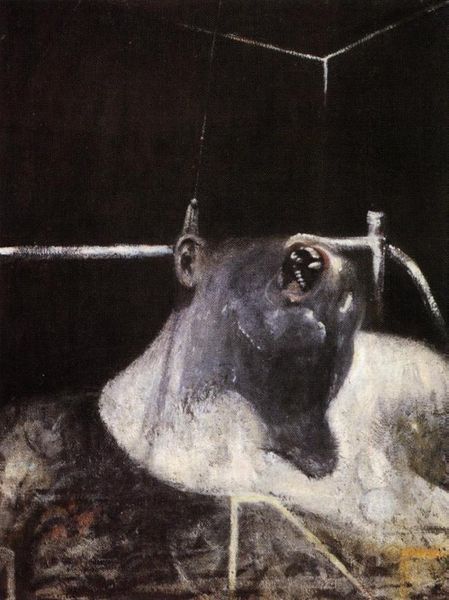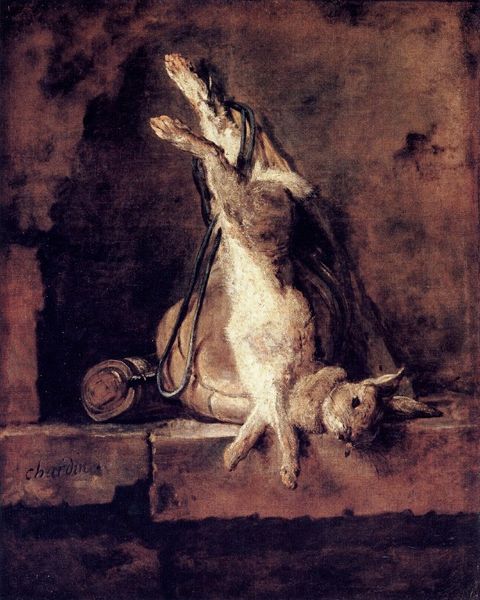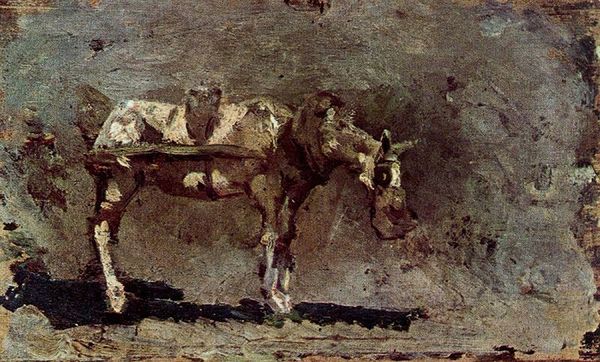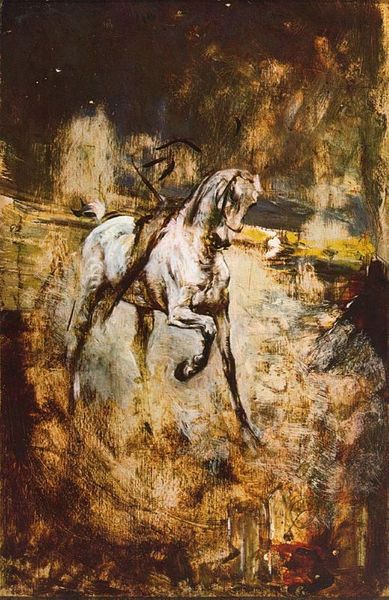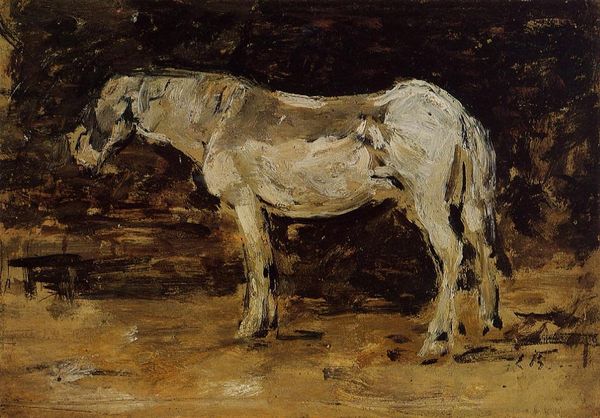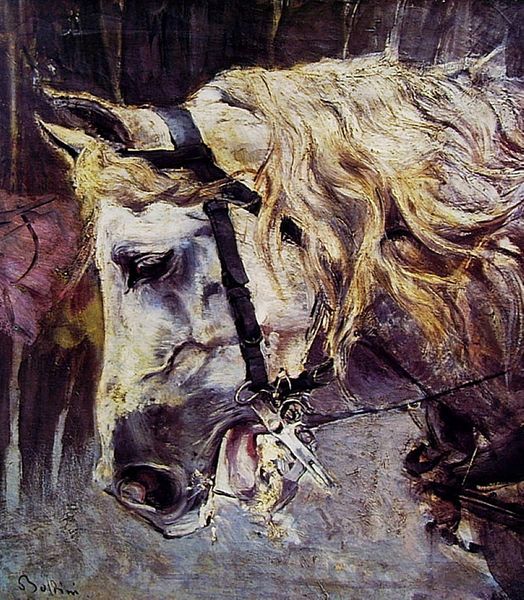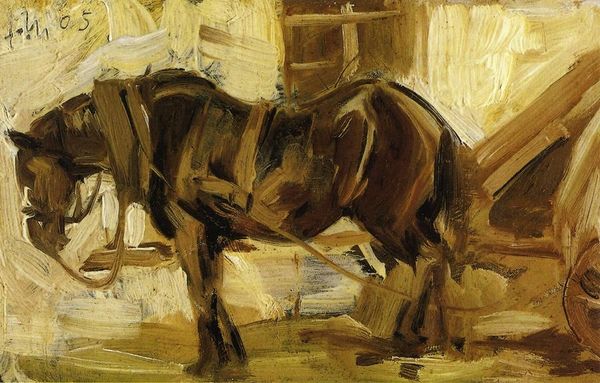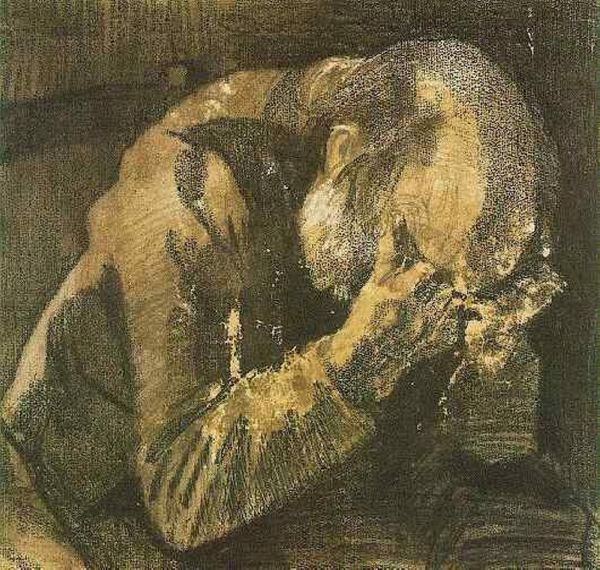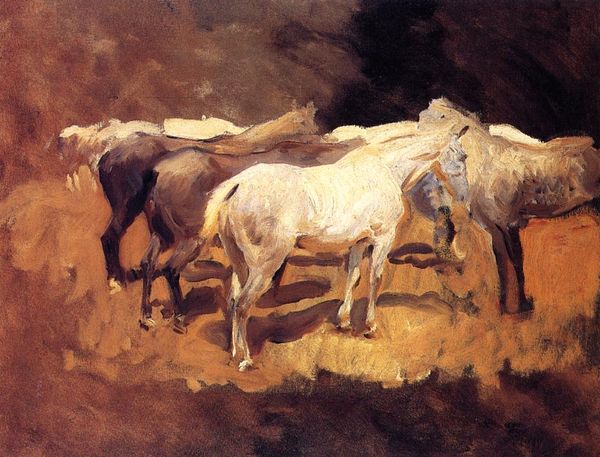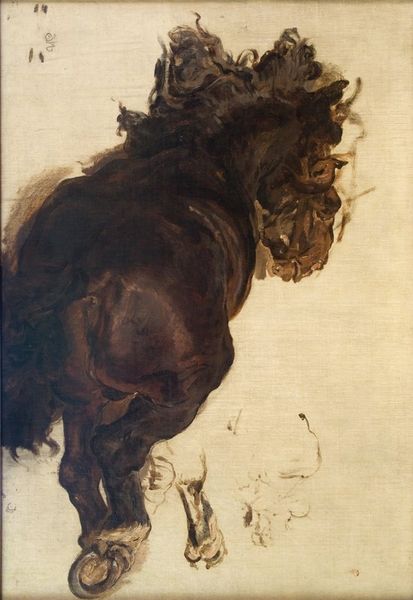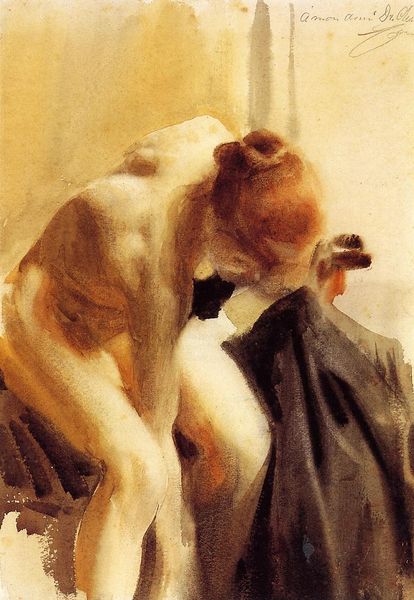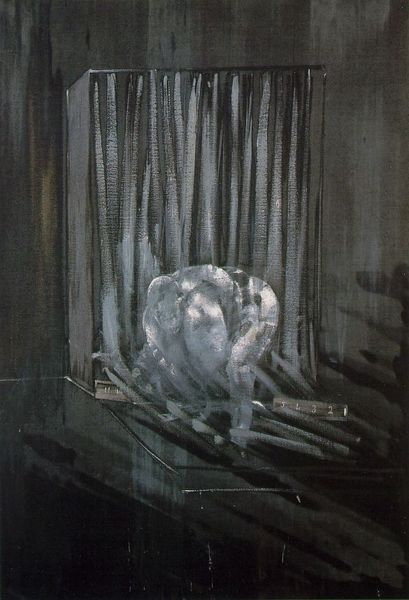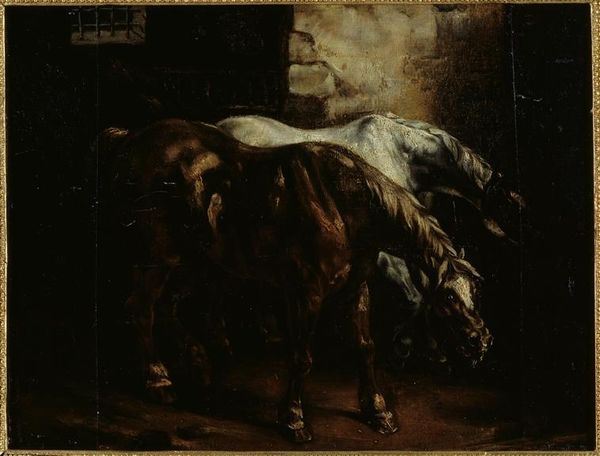
Dimensions: 139 x 106 cm
Copyright: Francis Bacon,Fair Use
Editor: Here we have Francis Bacon’s "Fragment of a Crucifixion" from 1950, made with oil paint. The sheer rawness of the brushstrokes is overwhelming! What compositional choices do you find most striking? Curator: Consider the dominance of the ochre ground, its oppressive weight creating a sense of spatial ambiguity. Note the stark contrast with the gestural application of white paint that defines the figures. This juxtaposition, is it not, a crucial element of the work's unsettling effect? Editor: It absolutely is. The figure seems caged, trapped by the geometry. It makes me wonder about confinement in Bacon's work in general. Curator: Observe how the artist employs impasto to sculpt the grotesque form, heightening the emotional impact through materiality itself. Does this tactile approach influence your reading of the crucifixion theme? Editor: It emphasizes the physical suffering, almost a visceral reaction to the act itself. So the texture is just as crucial to meaning as the subject is? Curator: Indeed. We must consider the visual vocabulary. The flattened perspective denies any sense of redemption or escape, reducing the event to a moment of pure, agonizing physicality. Ask yourself how the fragmented composition serves the psychological dimensions. Editor: I see how the fragment denies any resolution, reinforcing the open-ended feeling of pain and despair. Thank you, looking closely at Bacon’s technique really deepened my understanding. Curator: Yes, technique in itself serves meaning, shaping the visceral power within Bacon's interrogation of the human condition.
Comments
No comments
Be the first to comment and join the conversation on the ultimate creative platform.
